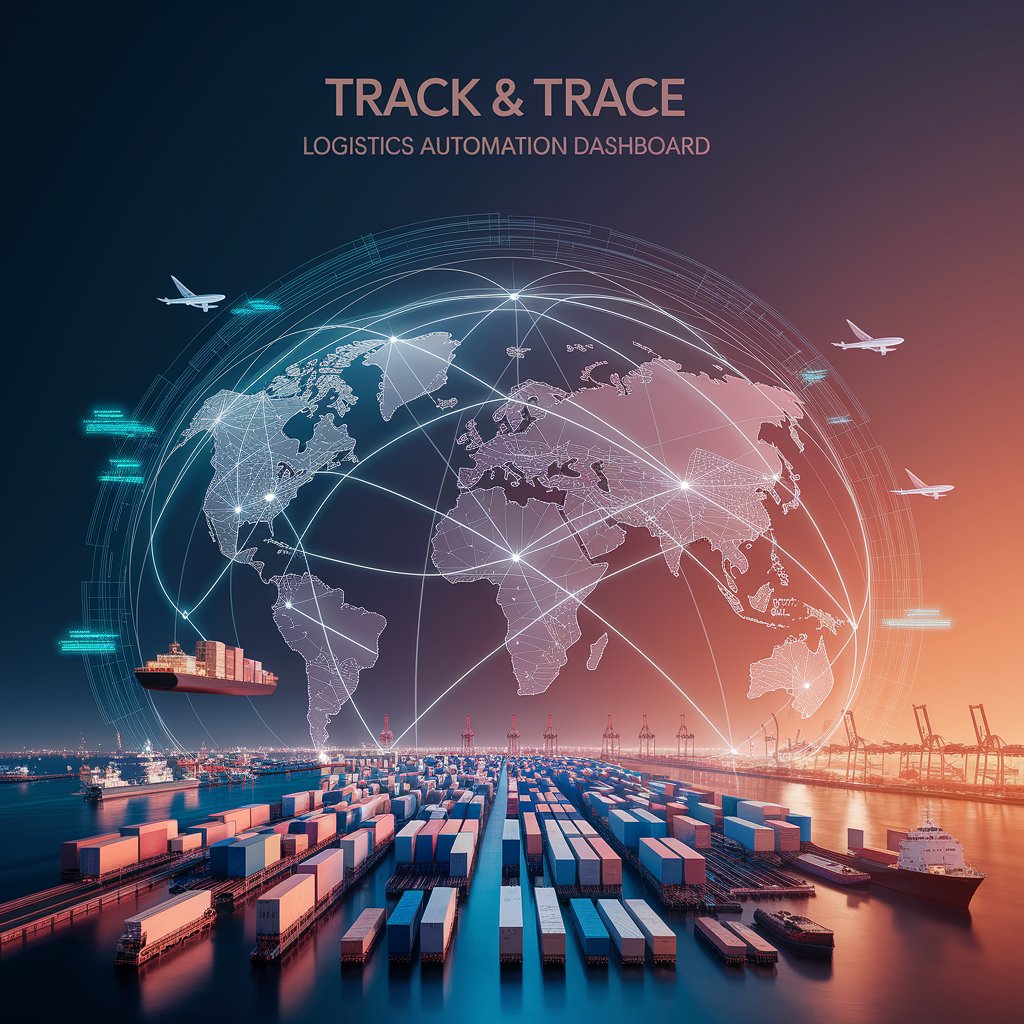How to Automate Track & Trace in Logistics: Step-by-Step Guide

Introduction
The problem: many companies still rely on manual tracking—checking carrier portals, copying updates into spreadsheets, and sending emails. This is inefficient and prone to errors.
By automating Track & Trace, you can connect carrier updates directly into your TMS/CRM, trigger alerts, and provide customers with real-time status without manual effort.
Step 1: Map the Workflow
- Trigger: Carrier or tracking API sends shipment status update.
- Data Capture: Collect ETA, location, milestones (departed, arrived, customs cleared).
- System Update: Sync with TMS/CRM.
- Notifications: Send proactive alerts via email, Slack, Teams, or WhatsApp.
- Customer Portal: Display live status updates automatically.

Step 2: Choose Your Tools
- Tracking APIs: AfterShip, project44, FourKites, Shippo, Linbis.
- TMS/CRM: Linbis Workspace, CargoWise, HubSpot, Salesforce.
- Automation Platforms: Zapier, Make, Power Automate.
- Messaging: Slack, Teams, Twilio WhatsApp, Email.
- Visualization: Google Sheets dashboards, BI tools (Power BI, Looker).
Step 3: Build the Automation (Example in Make)
- Trigger: Connect to AfterShip or project44 API.
- Pull shipment status updates (In Transit, Out for Delivery, Delivered, Exception).
- Pull shipment status updates (In Transit, Out for Delivery, Delivered, Exception).
- Update TMS/CRM:
- Send update to Linbis or Salesforce via connector.
- Match shipment ID with customer record.
- Send update to Linbis or Salesforce via connector.
- Proactive Notifications:
- If status = “Exception” → send Slack alert to operations channel.
- If status = “Delivered” → send WhatsApp/email confirmation to customer.
- If status = “Exception” → send Slack alert to operations channel.
- Update Dashboard:
- Push updates into Google Sheets or BI dashboard for real-time visualization.
- Push updates into Google Sheets or BI dashboard for real-time visualization.
- Archive:
- Store final delivery proof in Drive/SharePoint.
- Store final delivery proof in Drive/SharePoint.

Step 4: Test the Workflow
- Simulate a shipment delay.
- Verify that alert is sent to operations team.
- Confirm that customer receives proactive delivery updates.
- Check that CRM/TMS record is updated.
Step 5: Optimize
- Add ETA recalculation based on traffic/weather APIs.
- Use AI anomaly detection to flag shipments likely to miss deadlines.
- Automate post-delivery surveys for customer feedback.

Benefits of Track & Trace Automation 📈
- Customer Transparency: Live updates build trust and reduce calls.
- Operational Efficiency: Teams spend less time manually checking carriers.
- Faster Problem Resolution: Exceptions are flagged instantly.
- Scalability: Handle thousands of shipments without adding staff.
- Data-Driven Insights: Historical tracking data improves planning and forecasting.
Conclusion
Automating Track & Trace transforms logistics visibility. By integrating carrier APIs with your TMS/CRM and setting up real-time notifications, you eliminate manual tracking and deliver superior service.
With tools like AfterShip, project44, Zapier, and Linbis, you can create a connected system that updates itself, keeps customers informed, and gives your team time to focus on solving real problems instead of checking portals.
